Jan
Van Eyck
Jan
van Eyck is probably the most famous name in the history of Netherlandish
painting. Little is known of his early life, but by the 1420s he was already a
painter of some renown, employed by Duke Philip the Good of Burgundy, who
presided over one of the most illustrious courts in Europe. An outstanding
artist, Van Eyck was also a skilful diplomat and undertook numerous
ambassadorial journeys for the Duke.
Through
the centuries successive writers have paid tribute to Van Eyck's technical
mastery, calling him 'the king of painters' and crediting him with the
invention of oil painting. His glowing images are remarkable for their special
reality and naturalistic detail, while his combination of the minute and the
monumental led one art historian to comment that 'his eye was at the same time
a microscope and a telescope.'
The Duke's Emissary
For the last 16 years of his life Jan van
Eyck worked at the court of Philip the Good. The Duke made use of his skills as
both painter and diplomat, sending him on numerous secret missions.
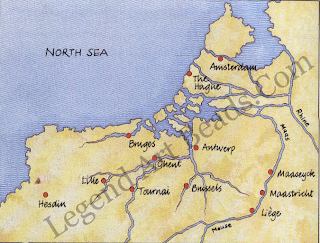
Only
a few years after his death in 1441, Jan van Eyck was being hailed on both
sides of the Alps as one of the greatest painters of the age. Although some of
the legendary status he rapidly acquired has been stripped away he was long
credited with being the 'inventor' of oil painting his fame has continued
undiminished to the present day. Now, as in his lifetime, he is the most
renowned painter of the Early Netherlandish School. In spite of such celebrity,
and the intensity of the research that has been devoted to him, knowledge of
his life as an artist is limited. We know nothing about what he did before he
is first recorded in 1422, when he was probably in his 2ds or early 30s.
Although from then on his life is well documented, little of the information
refers to his surviving work. A large part of his work has disappeared, and all
his dated paintings belong to the last 10 years of his life. Van Eyck was
probably born around 1390 in the small town of Maaseyck (from which he took his
name), about 15 miles downstream on the River Maas (Meuse) from Maastrict.
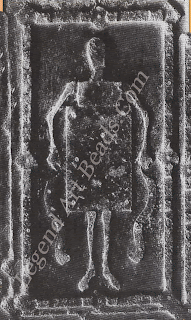
We do not know where or with whom he trained
as an artist, but the strict guild system of the day would have demanded he
learnt his craft thoroughly, for several years in the workshop of a master,
before he could be admitted to the painters' Guild of St Luke. We first hear of
him in 1422, when he was in The Hague, serving as painter and varlet de chambre
(equerry) to Duke John of Bavaria. As painter to the Duke, Van Eyck would
probably have been occupied with the decoration of the restorations to the
Binnenhof, the ducal residence, but nothing of this work survives.
A NEW EMPLOYER
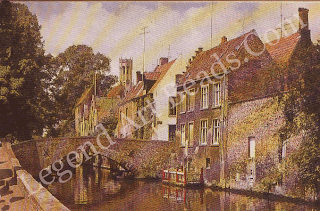
In
January 1425 John of Bavaria died, but Van Eyck soon found a new post working
for Philip the Good, the powerful Duke of Burgundy, to whom he was appointed as
painter and varlet de chambre in May 1425. Philip travelled extensively in the
administration of his states and had various residences, including ones at
Bruges, Ghent, Hesdin and Lille. Immediately after his new appointment, Van
Eyck was summoned to the court, then at Lille. Court documents relate that Jan
was employed 'because of his aptness in the art of painting about which the
Duke had heard from people in his service, and which he himself recognized in
the person of Jan van Eyck.' Jan clearly had something of a reputation, which
brought him now to one of the most sumptuous and cultivated courts of Europe. The
document continues: 'Relying on his loyalty and honesty, the Duke appointed him
to the normal honours, privileges, freedoms, rights and remunerations
pertaining to the office.' Initially the contract was for a year only,
renewable annually, thereafter, but Van Eyck was to stay there for many years.
Indeed, even when financial re-organization caused Philip to reduce his
household in December 1426, Van Eyck's services were retained.
THE PAINTER-DIPLOMAT
The
duties of a court painter were far more wide-ranging than is implied by the
modern term 'fine art'. Jan was expected to turn his hand to whatever the Duke
demanded. Besides the painting of portraits and decoration of princely
residences, he would have designed court costumes and ornamentation for tournaments,
ceremonies and festivities. Painting shields, staining banners, colouring
statues, and even designing surprises such as the 'entremets' (fantastically
fashioned food) for banquets would have been his tasks.
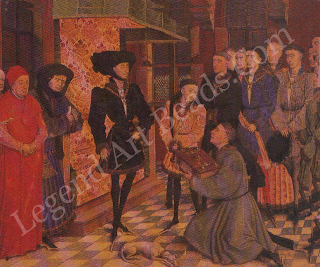 Moreover, Van Eyck's duties extended beyond
those of an artist, for he apparently had great skill and tact as a diplomatic
courtier. As early as 1426, he was entrusted with the confidential duties of a
secret pilgrimage, and what the court accounts describe as. . A certain secret
journey which likewise he f the Duke] has ordered him to make to certain places
that are not to be disclosed'. Over the next 10 years Van Eyck was employed on
several such secret missions. Van Eyck's travels brought him into contact with
painters of other towns, especially in Flanders, where there were several major
art centers within short distances of-each other. On 18 October 1427, he
celebrated the feast-day of St Luke with members of the painters' guild at
Toumai, and was awarded a gift of wine. On this occasion he must have met
Robert Campin, the leading painter in Tournai, who was breaking away from
medieval conventions with a bold, realistic, sculptural style.
Moreover, Van Eyck's duties extended beyond
those of an artist, for he apparently had great skill and tact as a diplomatic
courtier. As early as 1426, he was entrusted with the confidential duties of a
secret pilgrimage, and what the court accounts describe as. . A certain secret
journey which likewise he f the Duke] has ordered him to make to certain places
that are not to be disclosed'. Over the next 10 years Van Eyck was employed on
several such secret missions. Van Eyck's travels brought him into contact with
painters of other towns, especially in Flanders, where there were several major
art centers within short distances of-each other. On 18 October 1427, he
celebrated the feast-day of St Luke with members of the painters' guild at
Toumai, and was awarded a gift of wine. On this occasion he must have met
Robert Campin, the leading painter in Tournai, who was breaking away from
medieval conventions with a bold, realistic, sculptural style.
PORTRAIT OF A BRIDE
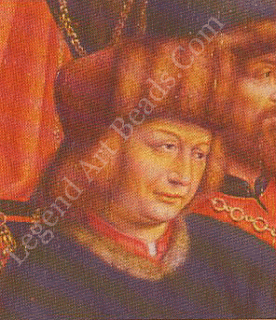
Van
Eyck's presence in the bourgeois town of Tournai may have been due to the
matrimonial ambitions of Philip the Good. Although he had been twice married,
Philip had no heir, and was looking first to Spain and then to Portugal for a
new bride. The unsuccessful embassy sent to negotiate terms in Spain returned
by way of Tournai, and Van Eyck was perhaps among the envoys. In October the
following year, he was certainly one of the party sent to King John I of
Portugal to negotiate for the hand of his eldest daughter, Isabella. The sea
voyages were long and arduous, meeting with unfavorable weather that imposed
long stopovers in England, and Jan was away for more than a year. His role as a
painter was significant on this mission. The ambassadors had a portrait of the
face of Isabella painted 'from the life' by 'Jan van Eyck, varlet de chambre to
the Duke of Burgundy and an excellent master of the art of painting', as the
chronicler of the mission describes him. This gave Philip the chance to see the
face of his proposed bride. Sadly, the portrait is lost.
The long negotiations finally proved
successful; Isabella was brought safely to Sluis in Zeeland by Christmas Day
1429, and the wedding party arrived at Bruges on 8 January 1430. With Philip
married, Van Eyck's life may have been a little quieter, providing the time for
him to complete his greatest work, the huge altarpiece for the Cathedral of St
Bavon in Ghent (p.942). This had apparently been begun by his brother Hubert
and left unfinished at his death in 1426, and for such a large, private
undertaking, Van Eyck would have required the Duke's permission.
A FAMILY MAN
At
about this time, Van Eyck married a woman named Margaret. And he acquired a
house in the northern area of Bruges, the district of the Court and of
important buildings belonging to foreign powers. He was becoming a family man.
At least two children were born to the Van Eyck’s, and Philip of Burgundy
displayed his respect for Jan by agreeing to become godfather to one of them.
During
the 1430s, Van Eyck had time and opportunity to paint for other patrons. For
Chancellor Nicolas Rollin, infamous for avarice and pride, he painted a
devotional piece and in 14345 he worked for the city authorities, colouring and
gilding six statues for the facade of Bruges City Hall. It was perhaps with a
view to this commission that the Mayor of Bruges had visited Jan's workshop in
July 1432 and left behind him gratuities for the master's apprentices.
However, Van Eyck was still in the service,
and at the call, of the Duke. His salary had been converted to a substantial
annual pension for life, and Philip valued his work highly. Indeed, in 1435,
Philip himself intervened with the bureaucrats in the accounting office at
Lille, who were obstructing the payment of Van Eyck's pension. Philip wrote of
his fear that their action might cause Van Eyck to leave his service, saying '.
. . we wish to arrange for certain important works with which he is to occupy
himself, and we could find no other artist to our liking who is so accomplished
in his art and science.
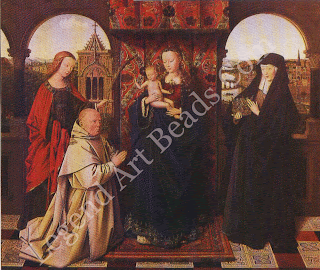
Apart
from an interruption in 1436, when he was employed on yet another secret
journey to 'foreign lands', Van Eyck continued his life in Bruges. Then, after
16 years association with Philip the Good, he died in June 1441. His high
position at court entitled him to burial at the Church of St Donat, the ancient
burial place of the counts. Philip paid tribute to his life and work by
granting his widow a gratuity 'in consideration of her husband's services and
in commiseration with her and her children's loss.'
Writer - Marshall Cavendish
 Only
a few years after his death in 1441, Jan van Eyck was being hailed on both
sides of the Alps as one of the greatest painters of the age. Although some of
the legendary status he rapidly acquired has been stripped away he was long
credited with being the 'inventor' of oil painting his fame has continued
undiminished to the present day. Now, as in his lifetime, he is the most
renowned painter of the Early Netherlandish School. In spite of such celebrity,
and the intensity of the research that has been devoted to him, knowledge of
his life as an artist is limited. We know nothing about what he did before he
is first recorded in 1422, when he was probably in his 2ds or early 30s.
Although from then on his life is well documented, little of the information
refers to his surviving work. A large part of his work has disappeared, and all
his dated paintings belong to the last 10 years of his life. Van Eyck was
probably born around 1390 in the small town of Maaseyck (from which he took his
name), about 15 miles downstream on the River Maas (Meuse) from Maastrict.
Only
a few years after his death in 1441, Jan van Eyck was being hailed on both
sides of the Alps as one of the greatest painters of the age. Although some of
the legendary status he rapidly acquired has been stripped away he was long
credited with being the 'inventor' of oil painting his fame has continued
undiminished to the present day. Now, as in his lifetime, he is the most
renowned painter of the Early Netherlandish School. In spite of such celebrity,
and the intensity of the research that has been devoted to him, knowledge of
his life as an artist is limited. We know nothing about what he did before he
is first recorded in 1422, when he was probably in his 2ds or early 30s.
Although from then on his life is well documented, little of the information
refers to his surviving work. A large part of his work has disappeared, and all
his dated paintings belong to the last 10 years of his life. Van Eyck was
probably born around 1390 in the small town of Maaseyck (from which he took his
name), about 15 miles downstream on the River Maas (Meuse) from Maastrict. In
January 1425 John of Bavaria died, but Van Eyck soon found a new post working
for Philip the Good, the powerful Duke of Burgundy, to whom he was appointed as
painter and varlet de chambre in May 1425. Philip travelled extensively in the
administration of his states and had various residences, including ones at
Bruges, Ghent, Hesdin and Lille. Immediately after his new appointment, Van
Eyck was summoned to the court, then at Lille. Court documents relate that Jan
was employed 'because of his aptness in the art of painting about which the
Duke had heard from people in his service, and which he himself recognized in
the person of Jan van Eyck.' Jan clearly had something of a reputation, which
brought him now to one of the most sumptuous and cultivated courts of Europe. The
document continues: 'Relying on his loyalty and honesty, the Duke appointed him
to the normal honours, privileges, freedoms, rights and remunerations
pertaining to the office.' Initially the contract was for a year only,
renewable annually, thereafter, but Van Eyck was to stay there for many years.
Indeed, even when financial re-organization caused Philip to reduce his
household in December 1426, Van Eyck's services were retained.
In
January 1425 John of Bavaria died, but Van Eyck soon found a new post working
for Philip the Good, the powerful Duke of Burgundy, to whom he was appointed as
painter and varlet de chambre in May 1425. Philip travelled extensively in the
administration of his states and had various residences, including ones at
Bruges, Ghent, Hesdin and Lille. Immediately after his new appointment, Van
Eyck was summoned to the court, then at Lille. Court documents relate that Jan
was employed 'because of his aptness in the art of painting about which the
Duke had heard from people in his service, and which he himself recognized in
the person of Jan van Eyck.' Jan clearly had something of a reputation, which
brought him now to one of the most sumptuous and cultivated courts of Europe. The
document continues: 'Relying on his loyalty and honesty, the Duke appointed him
to the normal honours, privileges, freedoms, rights and remunerations
pertaining to the office.' Initially the contract was for a year only,
renewable annually, thereafter, but Van Eyck was to stay there for many years.
Indeed, even when financial re-organization caused Philip to reduce his
household in December 1426, Van Eyck's services were retained. Moreover, Van Eyck's duties extended beyond
those of an artist, for he apparently had great skill and tact as a diplomatic
courtier. As early as 1426, he was entrusted with the confidential duties of a
secret pilgrimage, and what the court accounts describe as. . A certain secret
journey which likewise he f the Duke] has ordered him to make to certain places
that are not to be disclosed'. Over the next 10 years Van Eyck was employed on
several such secret missions. Van Eyck's travels brought him into contact with
painters of other towns, especially in Flanders, where there were several major
art centers within short distances of-each other. On 18 October 1427, he
celebrated the feast-day of St Luke with members of the painters' guild at
Toumai, and was awarded a gift of wine. On this occasion he must have met
Robert Campin, the leading painter in Tournai, who was breaking away from
medieval conventions with a bold, realistic, sculptural style.
Moreover, Van Eyck's duties extended beyond
those of an artist, for he apparently had great skill and tact as a diplomatic
courtier. As early as 1426, he was entrusted with the confidential duties of a
secret pilgrimage, and what the court accounts describe as. . A certain secret
journey which likewise he f the Duke] has ordered him to make to certain places
that are not to be disclosed'. Over the next 10 years Van Eyck was employed on
several such secret missions. Van Eyck's travels brought him into contact with
painters of other towns, especially in Flanders, where there were several major
art centers within short distances of-each other. On 18 October 1427, he
celebrated the feast-day of St Luke with members of the painters' guild at
Toumai, and was awarded a gift of wine. On this occasion he must have met
Robert Campin, the leading painter in Tournai, who was breaking away from
medieval conventions with a bold, realistic, sculptural style.


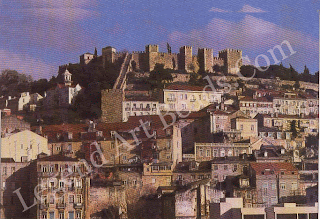

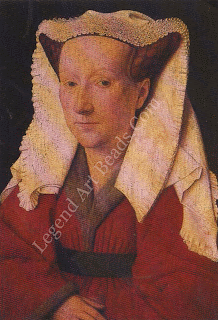











0 Response to " Introduction to Jan Van Eyck Artist"
Post a Comment